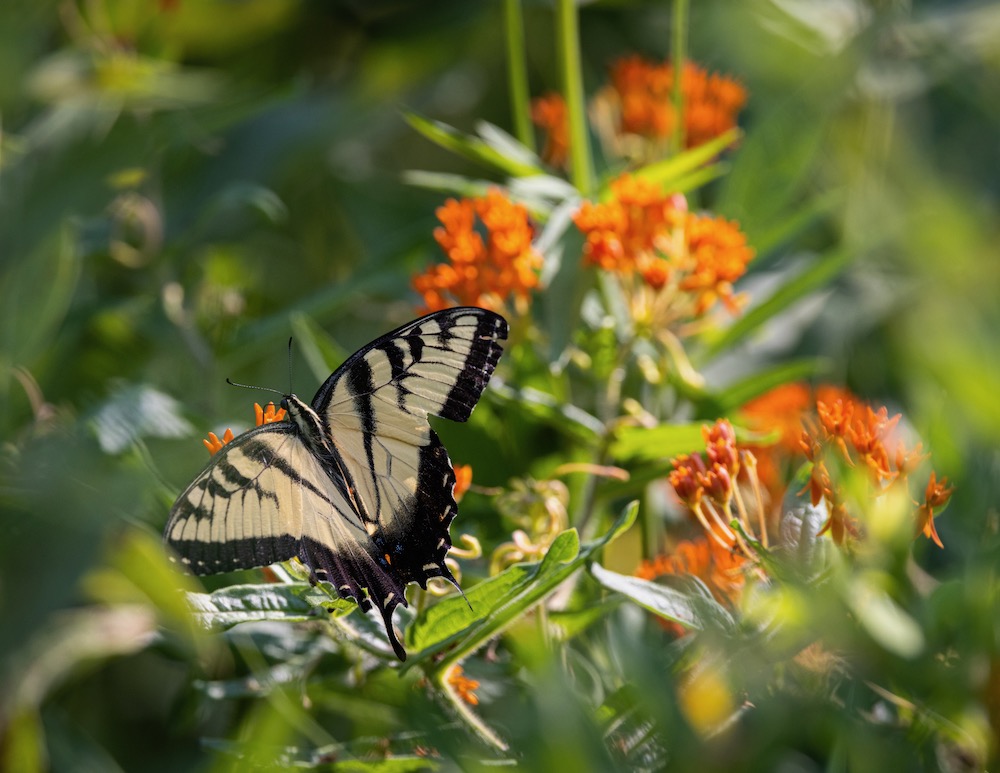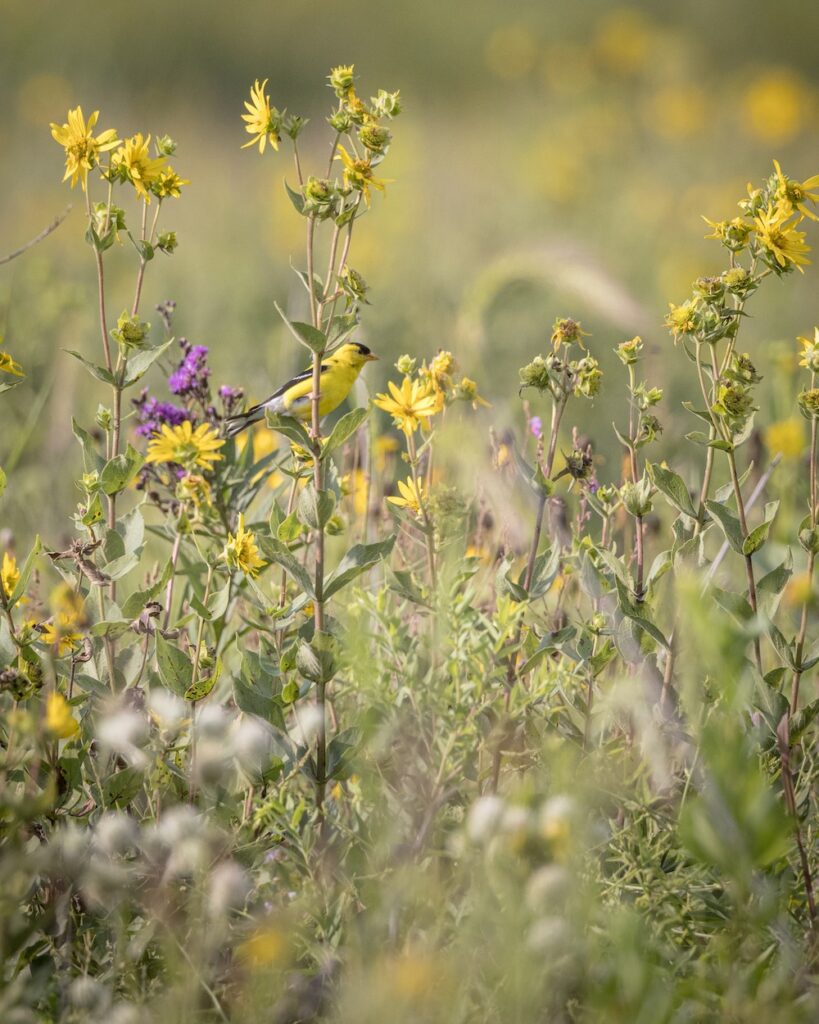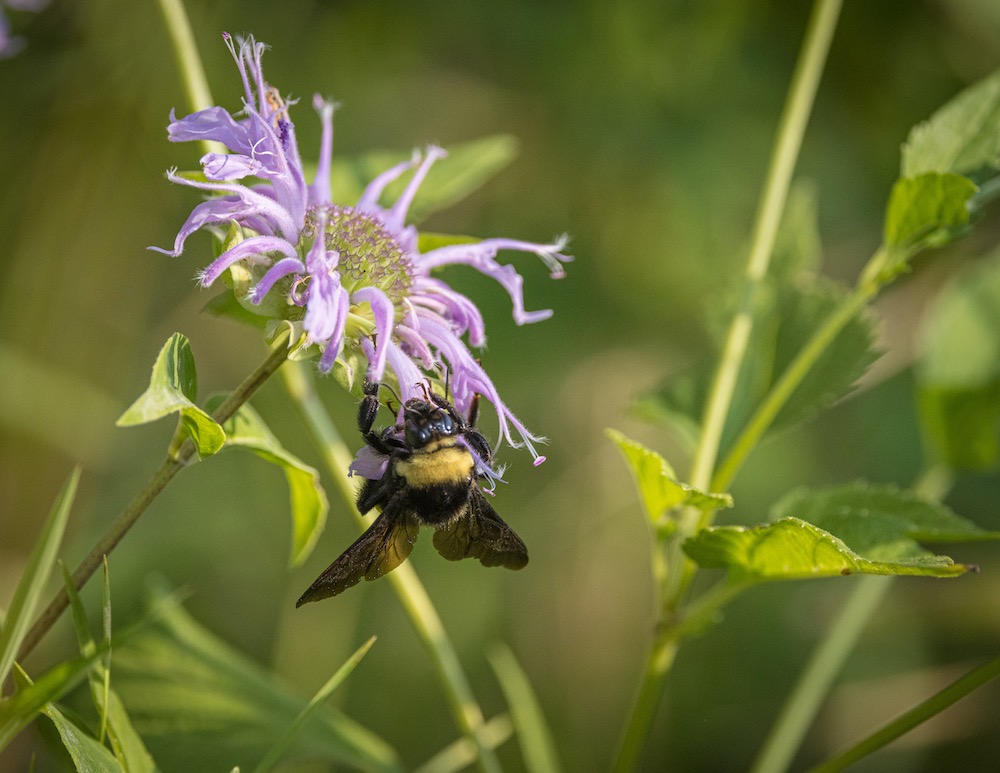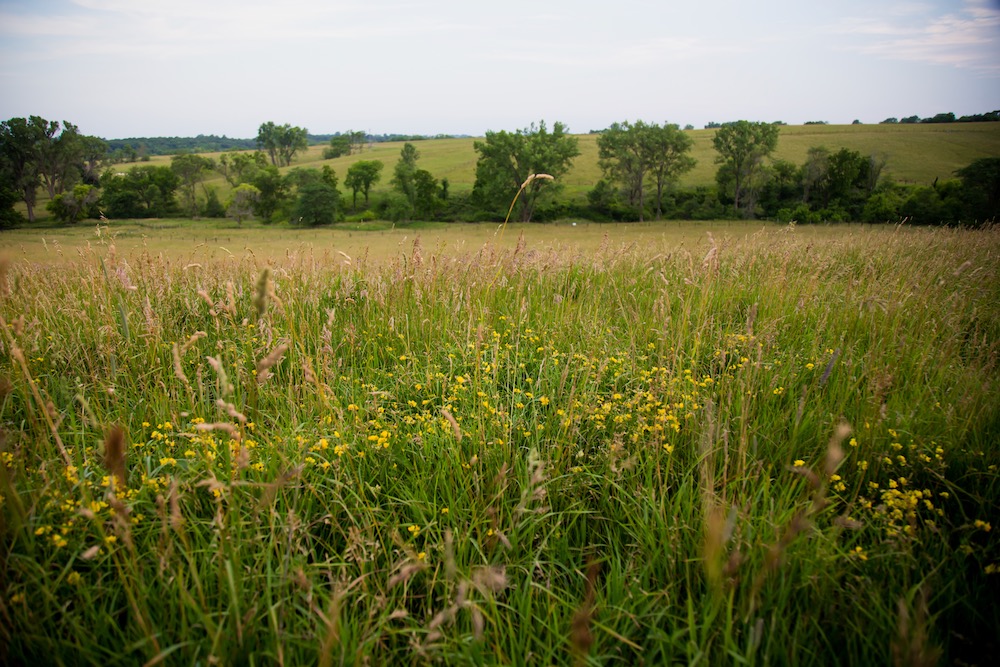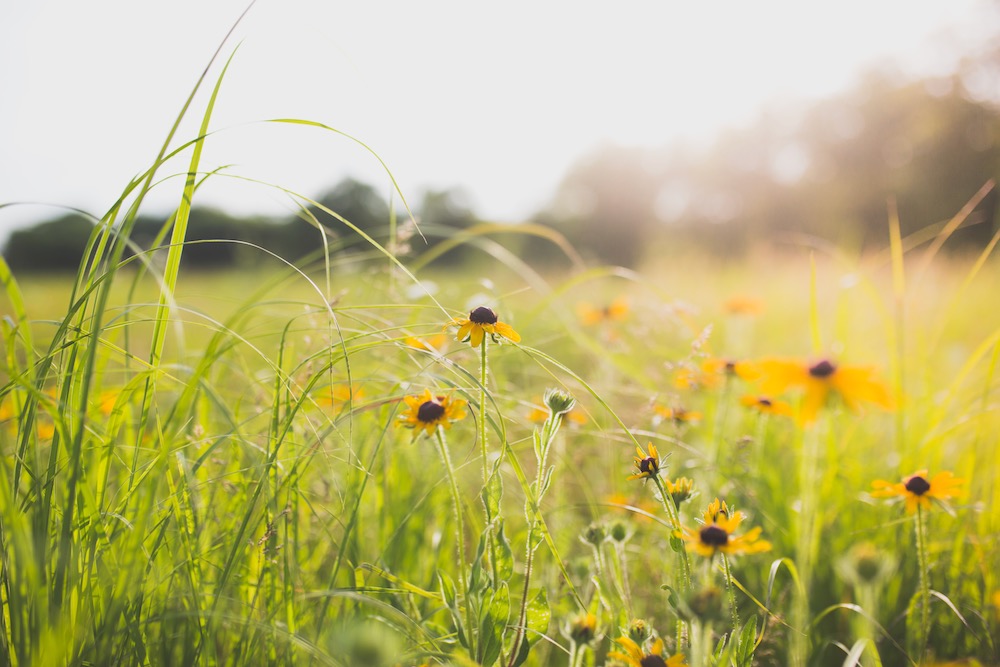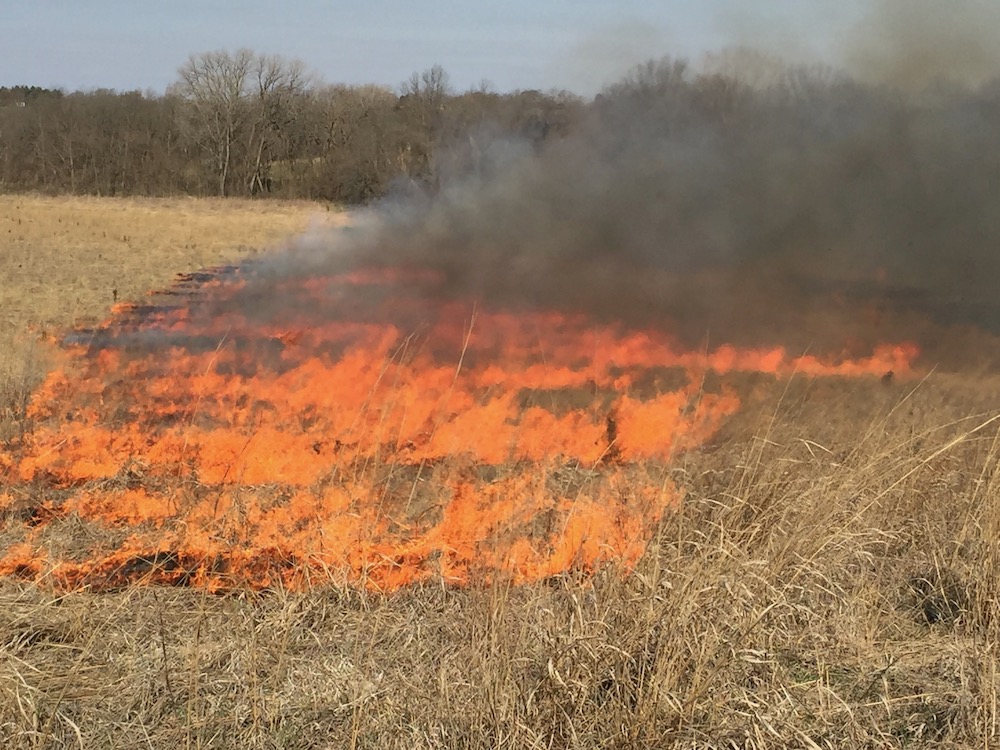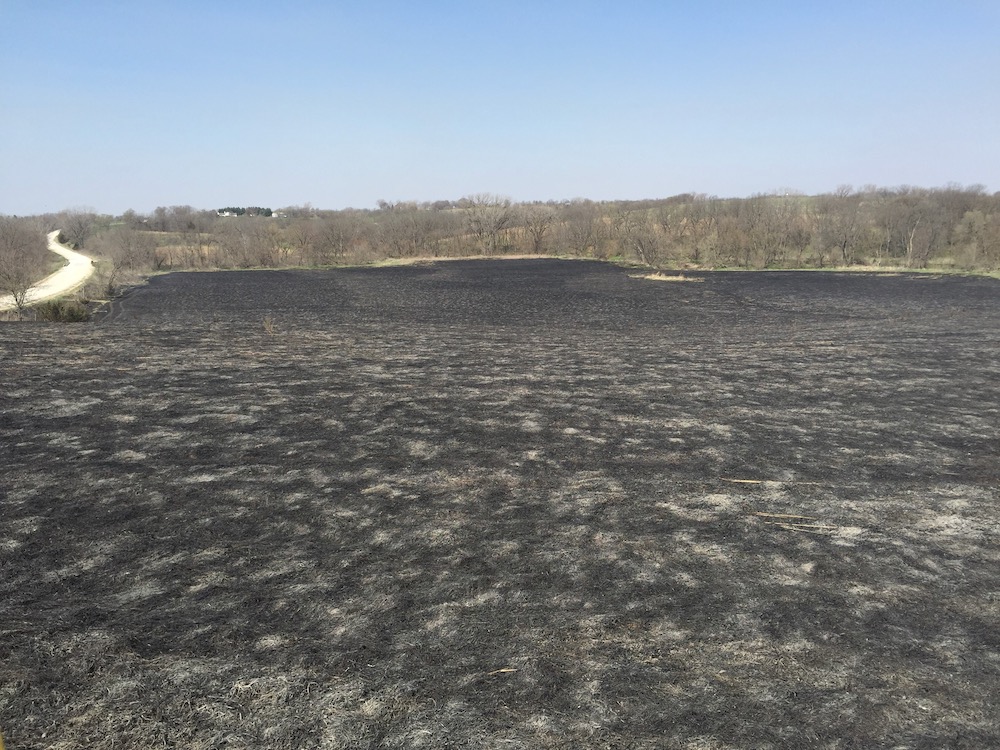Our conservation work goes hand-in-hand with our regenerative agriculture work.
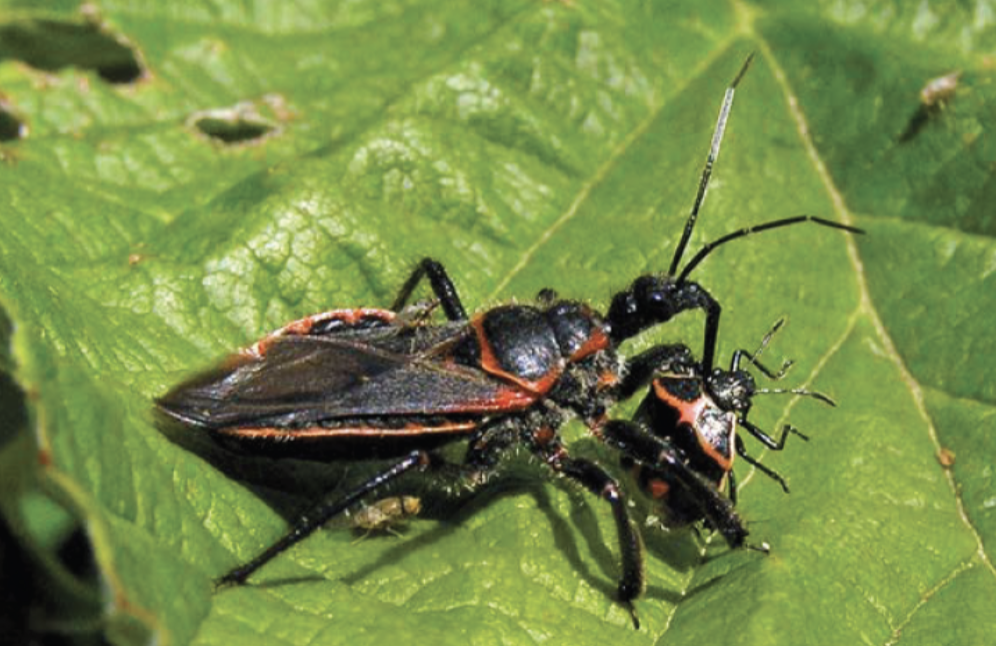
Native Grasslands & Pollinator Habitat
The perimeter around all of our farming parcels consists of a beautiful, deep swath of native grasslands, native Iowa prairie. The ecosystem partnership between the grasslands, their pollinator habitats and the farm parcels is one which significantly increases the productivity and viability of the agricultural crops grown at In Harmony Farm. Beneficial insects living in the grasslands contribute significantly to natural pest control by attacking and killing a wide variety of crop pests, such as stink bugs.
Native plants attract native pollinators. Good insects, birds and bats are attracted to the native grasses and serve as pollinators for many of the plants that provide the food grown at In Harmony Farm.
A native plant is one that has grown in an area since before human settlement and was not brought in more recently from other parts of the world. Native grasses and forbs are adapted to local soils, temperatures, nutrients and rainfall making them more resilient to the effects of drought than introduced grasses. Roots for native grasses often grow longer than non-natives which allows them to reach more water and nutrients, decrease compaction of the soil, increase water infiltration, and prevent soil erosion.
The tall grasses also provide wonderful cover and food supply for all kinds of essential wildlife.
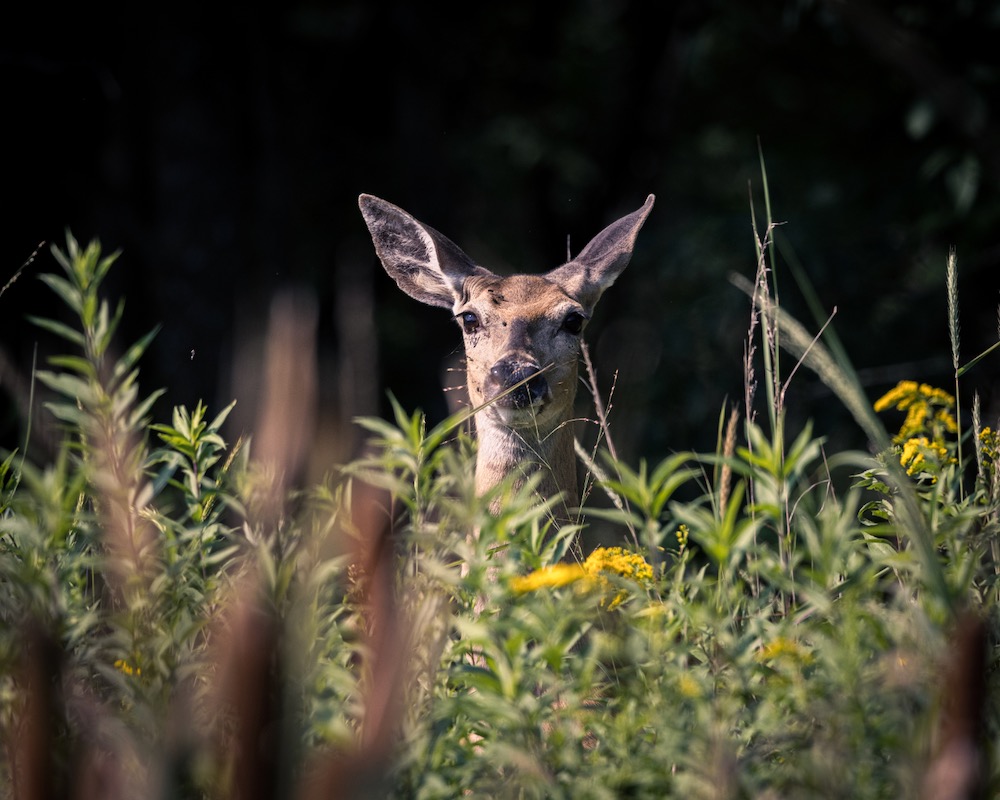
In Harmony Farm will include beehives producing delicate prairie honey and providing additional pollinator support.
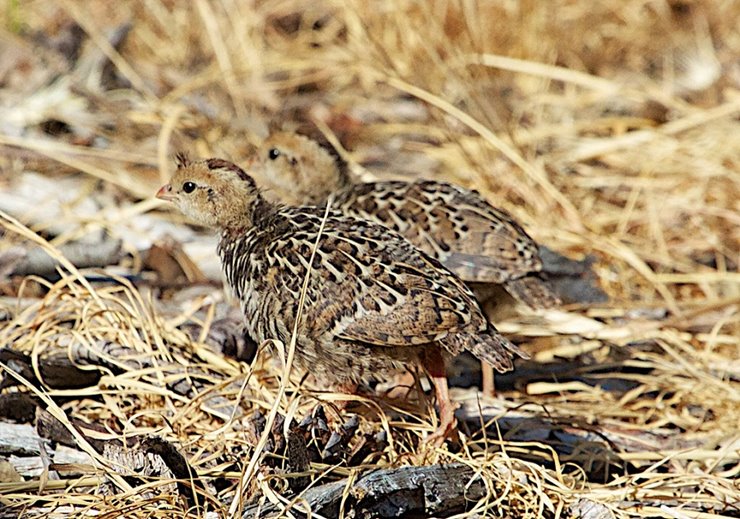
Upland Bird Habitat
Habitat buffers for upland birds are strips of vegetation established around the edges of crop fields to provide habitat for bobwhite quail, ring-neck pheasant, and other upland birds. Many of these birds have suffered population declines due to loss of habitat. These buffers can provide important nesting, brood rearing and escape cover while also serving as travel corridors between areas of suitable habitat. In addition to habitat for upland birds, these buffers may provide habitat for other animals and may limit sediment, nutrients, pesticides and other contaminants from entering streams and other water bodies. At In Harmony Farm, we have 4 acres dedicated to this important conservation practice.
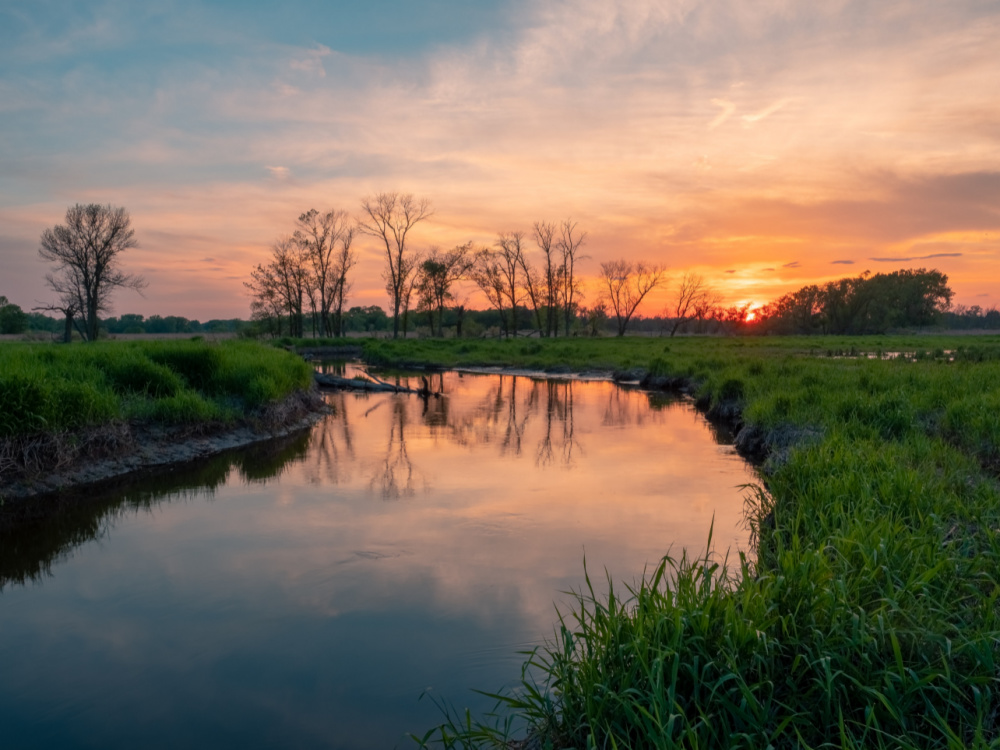
Wetland
In conjunction with our partners at the NRCS, we are looking at a wetland reconstruction project in an area close to Bear Creek that may benefit from this practice. The benefits of a wetland are tremendous; wetlands are the link between land and water. They are the transition zones where the flow of water, the recycling of nutrients and the energy of the sun meet to produce a unique ecosystem.
Wetlands are a place where plants and animals live amid standing water or saturated soils, housing the majority of Iowa’s endangered species. More than 10,000 invertebrate species are adapted to life in freshwater wetlands nationally. Wetlands are valuable for people, too. They filter pollutants from upland runoff, help control flooding, and maintain populations of wildlife.
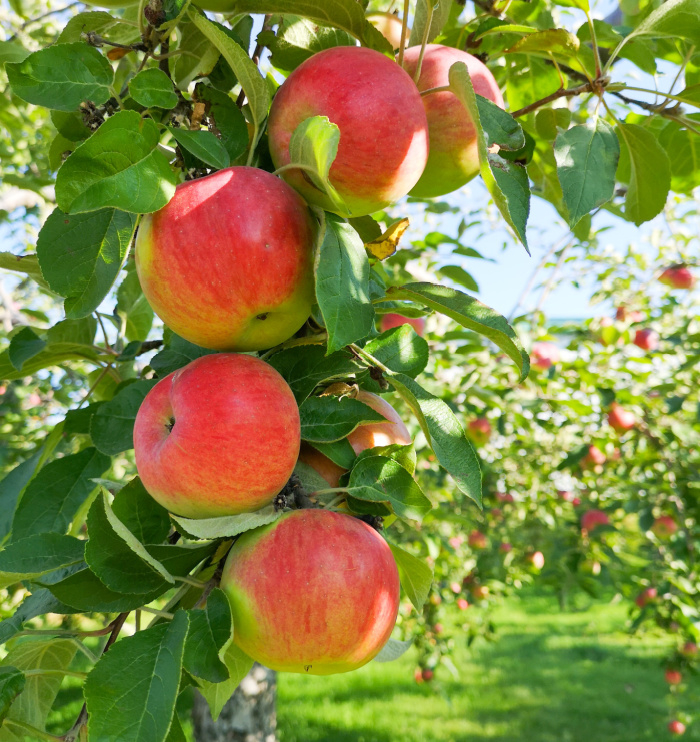
Perennial Crops
Over time, In Harmony Farm will establish fruit tree orchards and other perennial crops that serve multiple purposes. For example, in areas where there are wet soils due to topographic changes, an elderberry grove may be a great solution.
Maintenance
Fire is a natural part of the grassland ecosystem and helps maintain its health and vigor. It warms up the soil and reduces the leaf litter that accumulates each year, allowing sunlight to penetrate. Warming the soil increases microbial activity, which releases nutrients from decaying plant material that new grasses and flowers need to grow. Fire also helps to keep invasive species, weeds and shrubby growth, at bay. Pictured here is a burn on the In Harmony Farm prairie.

